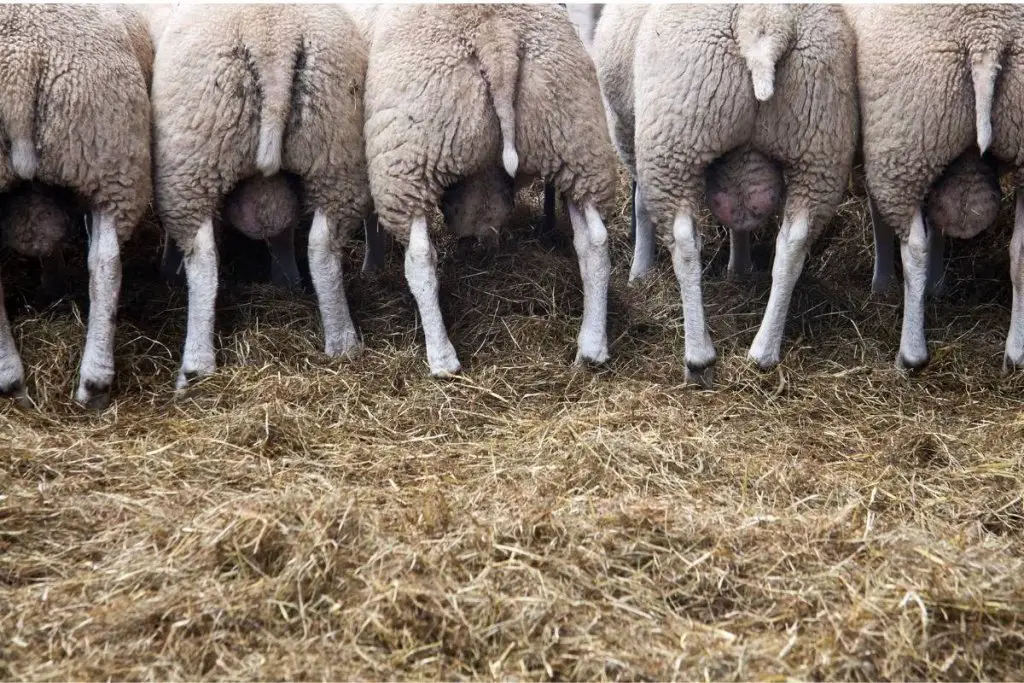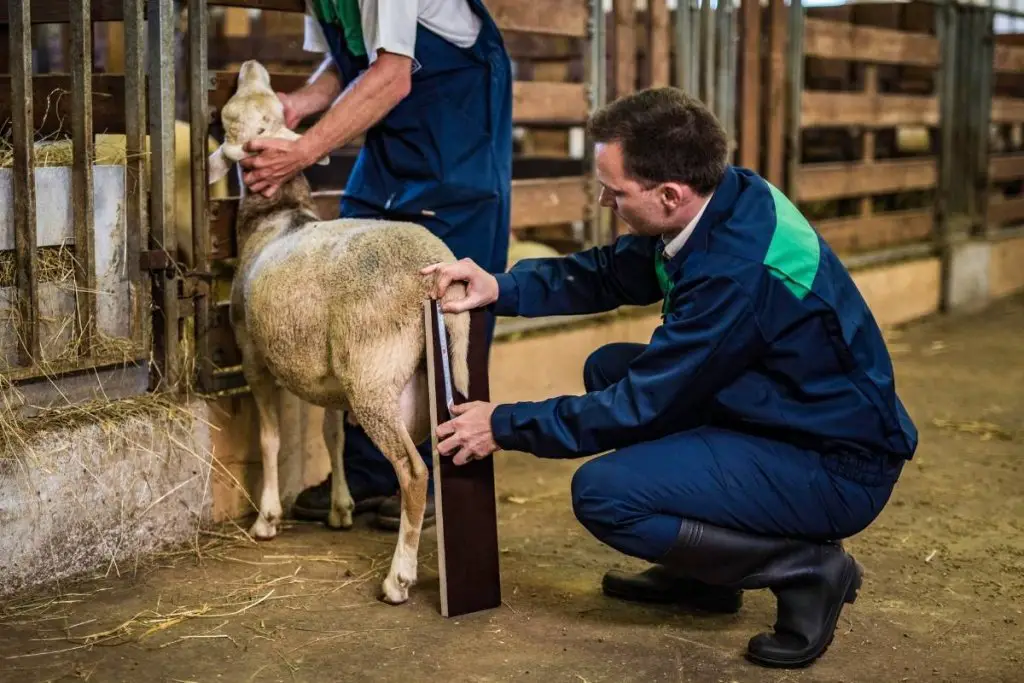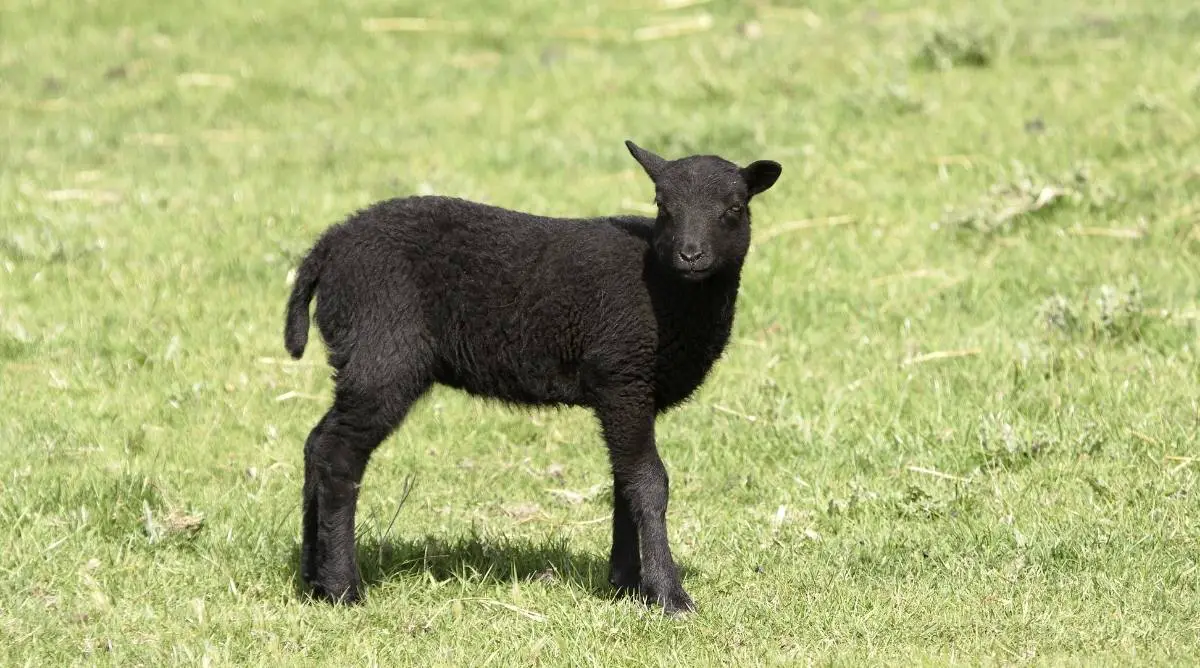Sheep are born with tails, but in commercial sheep farming, they are usually docked (removed). Sheep use their tails to protect their hindquarters from the cold and from sunlight, defend against flies, and stay clean by scattering their feces and urine.
Table of Contents
Sheep are born with tails
Sheep are born with tails. The tail length can vary significantly based on the breed of sheep. The tails of wool sheep are typically docked within the first month or two after birth in an effort to prevent infection and disease.
What do sheep use their tails for?

- Protecting the anus, vulva, and udder. The tail’s position over a sheep’s anus, vulva and udder protects them from excessive sunlight or cold temperatures.
- Blowing flies away. Flies are attracted to a sheep’s wool and tend to congregate around the anus, causing irritation and infestation. Sheep can move their tails to ward off flies.
- Scattering feces and urine. Sheep can keep themselves relatively clean by using their tail to scatter feces and urine away from their coat.
Why do farmers cut off sheep tails?
Despite the advantages of sheep tails, it’s common practice to cut sheep tails off. The primary goal is to lessen the risk of flystrike, which is when flies lay eggs in the wool or skin of a sheep, which leads to maggots. Hair sheep are sometimes left with their tails intact, as they don’t have the same risks of flystrike that wool sheep do.
Here are a few reasons it’s common to dock sheep’s tails:
- Reducing flystrike. Long tails can trap feces and urine in the wool near the anus, which attracts parasites. Blowflies thrive in a moist environment full of decaying matter, dung, or urine. They cause a condition known as flystrike where maggots feed on your sheep’s skin eventually leading to wounds, scanty wool, fertility issues, or death. Docking helps keep your sheep’s hindquarters drier and cleaner, making it less attractive as a breeding ground.
- Improving sheep’s hygiene. Docked tails are less likely to hold parasites, feces, or urine. That means the sheep’s wool stays cleaner, improving quality. In milk-producing ewes, it also reduces the chances of feces contaminating your milk.
- Making the shearing process easier. In undocked sheep, feces can stick within the sheep’s wool and create messy clumps that make shearing difficult. Short, docked tails prevent this kind of build-up.
What is flystrike?
Flystrike is a painful condition caused by parasite infestation. Blowflies lay eggs on a sheep’s wet wool. The eggs then hatch into maggots, which start feeding on the sheep’s skin and flesh.
When feces and urine are stuck to the wool around a sheep’s hindquarters, blowflies are attracted to this area and are more likely to lay eggs.
Blowfly eggs take about three days to hatch, and the damage from the maggots can begin quickly and cause wounds, bacterial infections, or deaths.
Is flystrike treatable?
Yes. If detected early, flystrike is treatable. However, it is expensive to treat. It costs farmers in Australia $280 million annually to manage the condition.
Lamb tail docking is one of the most effective procedures for preventing flystrike. Other natural remedies include:
- Physical removal of maggots
- Disinfecting wounds
- Proper management of manure
- Changing your sheep’s diet to ensure their stool stays solid, so it is less likely to stick to their wool
How does tail docking work?

Docking and castration are performed within the first 2-12 weeks of a lamb’s life. It’s less painful when done early.
Common docking methods include:
Rubber rings or expandable elastic bands
This method involves tying a rubber ring on your lamb’s tail at the joint space on the third vertebrae bone. The rubber band gradually applies pressure to constrict blood flow, killing the tail nerves.
This method is affordable, reliable, and easy to perform. However, it may take 3-4 weeks before the tail falls off. Rubber rings work well on lambs that are less than seven days old.
Hot blade
A gas-heated surgical knife’s blade is used for cutting. Then, the wound is cauterized to prevent blood loss. This method is quick, hygienic, and ideal for older lambs up to two months of age.
Clamping and surgery
This method requires a professional veterinarian. Unlike other ways of docking, there’s the use of anesthesia and surgery. The vet performs a two-stage process. First, a clamp is put on the tail. Then, after waiting for three days, the tail is surgically removed. The method gives your sheep’s tail a neat appearance.
How long is a sheep’s tail before docking?
A lamb’s tail length at birth depends on its breed and genetics.
A merino lamb has a tail between 36-40 centimeters before docking. Other breeds have tails closer to 20 centimeters.
After docking, the best tail length is around 0.7 inches, with the cutting point being at the third or fourth vertebrae.
What happens if you dock your lamb’s tail too short?
Rectal prolapse
If you dock your lamb’s tail below the recommended length, the anus, vulva and udder will be left uncovered. This may lead to rectal prolapse, where the anus protrudes outwards. If untreated, it may cause death.
The condition is a growing concern. One study reported 7.8% prolapse incidences in lambs with short-docked tails as compared to 1.8% in long-docked ones.
Vulva Neoplasia
A major function of a sheep’s tail is to protect the vulva. In the event the tail is too short, the vulva is exposed to harmful sunlight rays which may cause cancer.
Flystrike
An extremely short tail can’t scatter feces effectively. This means the chances of feces and urine soiling are higher than before docking took place. The wet wool plus decaying dung attracts blowflies, leading to serious flystrike that is expensive to treat.
Some farmers don’t dock their sheep’s tails
Some shepherds don’t find it necessary to dock their sheep’s tails for several reasons:
- Some farmers have sheep breeds with naturally short tails. Not all sheep require docking. Hair sheep breeds such as Katahdin and Wiltshire horn are born with short, relatively stumpy tails. Short-tailed sheep have a thin, wool-less tail that doesn’t need docking.
- To protect lambs from pain and stress. While cutting a lamb’s tail off is a common practice, some farmers prefer to avoid putting the animals through this process and instead avoid it.
- Some farmers prevent flystrike in other ways. Tail docking mainly helps in reducing flystrike. Some farmers choose to manage flystrike in other ways, like more frequent wool clipping and the removal of wool soiled by fecal matter.

